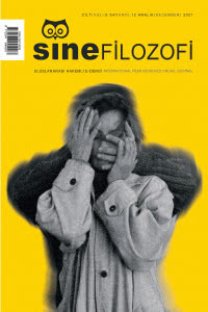Faces and Surfaces in the Landscape of Pasolini’s ‘Palestina’
diagram, deleuze, documentary
Faces and Surfaces in the Landscape of Pasolini’s ‘Palestina’
deleuze, diagram, documantary,
___
- Anastas, Ayreen (2007, January) On Pasolini: Interviewed by Samar Martha. Retrieved from http://www.infocusdialogue.com/interviews/ayreen-anastas/
- Agamben, Giorgio, (1998), Homo Sacer: Sovereign Power and Bare Life, Stanford: Stanford University Press.
- Ballantyne, Andrew, (2007) Deleuze And Guattari For Architects, London and New York: Routledge
- Boer, Inge E., (2006), Uncertain Territories: Boundaries in Cultural Analysis, Amsterdam:Rodopi.
- Bonta, M., and Protevi, J., (2006), Deleuze and Geophilosophy: A Guide and Glossary, Edinburgh : Edinburgh University Press.
- Bruno, Giuliana, (2010), ”Pleats of Matter, Folds of the Soul”, N. Rodowick (ed) Afterimages of Gilles Deleuze’s Film Philosophy, Minneapolis : University of Minnesota.
- Cache, Bernard, (1995), Earth Moves : The Furnishing of Territories, Cambridge, Mass., London : The MIT Press.
- Calvino, Italo, (1984) Il viadante nella mappa, in Collezione di sabbia, Palomar/Mondadori, Milan 1984
- Calvino, Italo, (2013), Collection of Sand: Essays. UK : Penguin.
- Careri, Francesco, (2002), Walkscapes: Walking as an Aesthetic Practice, Barcelona: Culicidae Architectural Press. Crary, Jonathan, (1992), Techniques of the Observer: On Vision and Modernity in the Nineteenth Century. Cambridge, Massachusetts: MIT Press. Deleuze, Gilles, (1988), Foucault, Minneapolis : University of Minnesota Press
- Deleuze, Gilles (2003) Francis Bacon the Logic of Sensation, London: Continuum
- Deleuze, Gilles, (1989), Cinema 2: Time-Image, Minneapolis : University of Minnesota Press
- Deleuze, Gilles, (2004), ”Faces and Surfaces”, David Lapoujade (ed.), Desert Islands and Other Texts, 1953-1974, Semiotext(e), pp.281-312.
- Deleuze, G., and Guattari, F., (1987), A Thousand Plateaus: Capitalism and Schizophrenia, Minneapolis : University of Minnesota Press,
- Gerner, Alexander, (2011), Diagrammatic Thinking. Atlas of Transformation, Retrieved 20 June 2020, from http://monumenttotransformation.org/atlas-of-transformation/html/d/diagrammatic-thinking/diagrammatic-thinking-alexander-gerner.html
- Grosz, Elizabeth, (2013), Chaos, Territory, Art: Deleuze and the Framing of the Earth, New York: Columbia University Press.
- Ivory, J., Pasolini, P. P., and Sartarelli, S., (2014) The Selected Poetry of Pier Paolo Pasolini: A Bilingual Edition, Chicago: The University of Chicago Press
- Kedem, Eldad,(2007), The Kibbutz and Israeli Cinema: Deterritorializing, Representation and Ideology, Raanana, Israel: The Open University of Israel,
- Le Corbusier, Charles-Édouard Jeanneret,(1935), Aircraft, London: Studio Publications
- Lefebre, Martin, ( 2007), Landscape and Film, London: Routledge
- Margulies, Ivone, (2003) Rites of Realism : Essays on Corporeal Cinema, Durham, North Carolina: Duke University Press
- Massumi, Brian, (1987), ”Translator's Foreword: Pleasures of Philosophy”, in, A Thousand Plateaus: Capitalism and Schizophrenia, Minneapolis: University of Minnesota Press
- Nabokov, Vladamir, (1989), Invitation to a Beheading, Trans. by Dimitri Nabokov, New York: Penguin-Knopf Doubleday Publishing Group
- Pasolini, Paolo Pier, (1962) ”On landscape, painting and film”, in, Mamma Roma, Milano: Rizzoli
- Pasolini, Paolo Pier, (1969), “Sopralluoghi in Palestina and The Gospel According to St Matthew” İn, Pasolini on Pasolini: Interviews with Oswald Stack, Bloomington, Indiana: Indiana University Press.
- Pasolini, Paolo Pier, (1965), ”Pier Paolo Pasolini: An Epical-Religious View of the World”, Film Quarterly vol. 18, no. 4, Summer, 41.
- Pasolini, Paolo Pier, (1976) ”Cinema of Poetry”, B. Nichols (ed) Movies and Methods. Vol. 1. Berkeley: University of California Press, pp.542-558.
- Pasolini, Paolo Pier, (1980) Poésies, 1953-1964 Paris: Gallimard
- Pasolini, Paolo Pier, (1996), Selected Poems, Norman Macafee (Trans. By) New York: Farrar, Straus and Giroux
- Rajchman, John, 1998. Constructions, Mass., Cambridge, London : The MIT Press
- Schroth, Martin (2006) B/ordering Space: The Impact of Border Thinking in Architecture, Theorywork, the Städel schul Architecture Class, Frankfurt am Main
- Segal R, Tartakover D, and Weizman E. (2003), A Civilian Occupation, The Politics of Israeli Architecture, Israel: Babel Publishers
- Seger, Monica, (2015), Landscapes in Between: Environmental Change in Modern Italian Literature and Film, Toronto: University of Toronto Press
- Smithson, Robert (1996) Robert Smithson:The Collected Writings, Berkeley, Los Angeles, London : University of California Press
- Smithson, Robert (1996) “A Tour of the Monuments of Passaic, New Jersey [1967]” in Robert Smithson: Writings of Robert Smithson, ed. Jack D. Flam Berkeley, California, London: University of California Press, pp. 68-74
- Steimatsky, Noa, (2003), ”Pasolini on Terra Sancta : Towards a Theology of Film”, Ivona Margulies (ed.) Rites of Realism: Essays on Corporeal Cinema, Durham: Duke University Press
- Urbano, Cosimo, (2000), ”A Dream of Freud: Pier Paolo Pasolini’s Edipo Re”, Psychoanalytic Studies V2, No:2, pp. 177-191.
- Watson, Janel, (2011), Guattari's Diagrammatic Thought: Writing Between Lacan and Deleuze, London: A&C Black
- Wise, J.M. ,(2005) Gilles Deleuze Key Concepts, Charles J. Stivale (Ed), Montreal & Kingston-Ithaca: Mc-Gill Queen’s University Press
- Zdebik, Jakub (2012), Deleuze and the Diagram: Aesthetic Threads in Visual Organization, London: Bloomsbury
- Yayın Aralığı: 2
- Başlangıç: 2016
- Yayıncı: Serdar Öztürk
Sinema ve Felsefe İlişkileri Üzerine: Sinemada Tembellik Hakkı
Yeşilçam Sinemasında Felsefeyi Aramak
Sinemada Felsefeden "Yararlanma" Yolları Üzerine Bir Tartışma
L'Amant Double Filminde Öteki Mekân Temsili Olarak Heterotopya
Deri-Ben’likten Psişik Sarmala: Tiksinti’de Mekan ve Abject İlişkisi
Faces and Surfaces in the Landscape of Pasolini’s ‘Palestina’
L'Amant Double Filminde Öteki Mekân Temsili Olarak Heterotopya
Basın Fotoğraflarında Sanatsal Kaygı / Ölümün ve Şiddetin Kutsanması ve Yüceltilmesi
SİNEMA-SEYİR VE SEYİRCİ-Türkiye'de2000 Sonrası Değişen Seyir Kültürü ve Yeni Seyir Deneyimleri
Sinemada Felsefeden "Yararlanma" Yolları Üzerine Bir Tartışma
